Liquidation of a well: technology, features, regulatory
Well abandonment is a fairly topical issue among novice drillers, which causes quite a lot of controversy.
In order to understand this difficult question, we decided, together with our readers, to study the features and technology of the process.

Liquidation tampon
Purpose
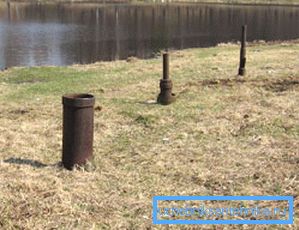
Most consumers, who have decided to build their own wells and have begun to study the issue, are faced with such a concept as liquidation tamponazh. This topic is given special attention in the technical literature, which is why it causes such interest.
To put it simply, tamponing is the cementing of the trunk of a structure in order to protect the subsoil and the ecological balance of the area. And here begins to become clear all the hype arising around the liquidation measures.

The fact is that when extracting water from a great depth, the shaft of the mine crosses two or more aquifers. Over time, the structure is destroyed, and there is a danger of water penetrating from the horizon into the horizon, which leads to contamination of deeper sources.
Note! The artesian aquifers are considered to be a strategic reserve of the state; therefore, measures for their protection are regulated by law and are under the supervision of a number of control and auditing bodies of the country.

There is a special regulatory document called “Instructions for the conservation and liquidation of wells and equipment from their mouths and shafts RD 08-492-02”, which determines the procedure for the conservation and liquidation of:
- operational,
- intelligence,
- search,
- control,
- parametric,
- support,
- injection,
- balneological
- special and other wells.
According to this instruction, the appointment of the liquidation grouting is reduced to the following items:
- Preservation of deposits and subsoil from pollution, leakage and other undesirable phenomena. Abandoned and technically faulty wells pose a serious danger to aquifers;
- Life safety and health of citizens living in the surrounding area. Infection of artesian deposits can lead to a humanitarian and environmental catastrophe, which can pose a threat to the health and life of the population;
- Protection of the surrounding nature and natural habitat of all representatives of flora and fauna. As you know, water is a source of life, and poisoned water, respectively, is a source of danger and extinction of species;
- Protection of buildings and structures located in the zone of influence of the well. Serious development can have a tangible impact on the geology of the terrain, which can lead to accidents as a result of movements, leaching and other changes in the structure of the upper layers of the earth's crust;
- The activities of many mining facilities are associated with flammable, explosive, toxic and other hazardous substances that must be isolated in the event of the closure of an object or its failure.

Note! Failure to comply with the requirements for the elimination and preservation of wells threatens criminal prosecution in accordance with the articles of the Law of the Russian Federation No. 2395-1 "On Subsoil".
Criteria of necessity

Studying the document further, we can determine the criteria for the need for carrying out liquidation work, or, to put it simply, list the objects that are subject to liquidation according to the requirement of instruction RD 08-492-02:
- Wells that have developed their resource or fulfilled their purpose;
- Objects, the liquidation of which is dictated by geological reasons;
- Structures that require closure for technical reasons;
- Objects that should be plugged for technological, environmental or other reasons.

This is followed by an explanation and clarification of these four points, which lists the conditions and events leading to the need for liquidation.
If you omit all kinds of industrial and other objects that are not related to the extraction of water, you can list the objects that should be disposed of without fail:
- Wells that have reached the minimum allowable limits of flow rate, which are established by the technological development scheme, project or prescription to substantiate the lower limit of the profitability of the object;
- Production wells, which were transferred to injection or control, but the need for their use is no longer;
- Objects brought to the depth specified in the project, but caught in unfavorable geological conditions: lack of reservoir areas, marginal areas, as well as mines that have produced non-industrial water inflow;
- Structures that could not be brought to the design depth due to the incompatibility of the actual section with the design, as well as wells that revealed insurmountable obstacles in the geological section, such as collapses, accidents, areas of catastrophic absorption and highly plastic rocks;
- Emergency facilities, where incidents and complications have arisen, which cannot be eliminated by available methods or economically unfeasible;
- Wells, on which leaks were found in the production casing, which arose as a result of metal corrosion and exposure to aggressive media;
- Structures damaged by natural disasters and earthquakes, as well as facilities where there is a real risk of landslides or flooding;
- Wells located in water protection zones of lakes or rivers, sanitary protection zones of cities and other populated areas, as well as in restricted areas. Works are carried out in the presence of reasonable requirements and claims of the relevant supervisory and security structures;
- Facilities that are located in a zone of altered geological conditions that led to changes in sanitary and environmental requirements, as well as requirements and safety measures, and the operation of the facilities no longer corresponds to the status of the zones where they are located;
- Gushing water pressure deposits.
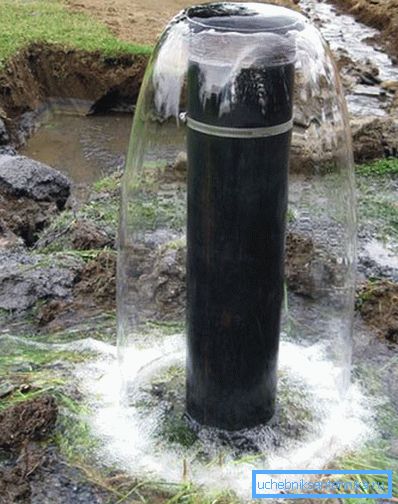
As a rule, the decision on the need to eliminate a well is taken by the state supervisory authority:
- sanitary-epidemiological station;
- Gosgortekhnadzor of Russia;
- or other authorized organization.
Next, a project is drawn up, the estimated cost and the order of work production is determined, and a team of specially trained professionals with all the necessary equipment leaves for the site.

In the case of a private well, the costs and responsibility for carrying out the liquidation work are borne by its owner.
Note! Cases and events that require contact with the SES or Gosgortekhnadzor are described in the technical certificate of the facility, and if the controlling authority instructs to dismantle the facility after such treatment, the well owner must perform all the works in a timely manner in accordance with the rules for their conduct.
Technology
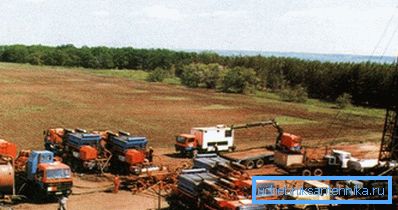
There is a huge amount of various means and methods of liquidating plugging of various wells.
These methods depend on:
- specific conditions
- sizes,
- depths,
- and well assignment.
Separately consider hazardous objects, objects in contact with aggressive media and explosive substances.
For work using a large number of special equipment, compressor units, concrete pumps, drilling rigs for wells and other means. You can get acquainted with all the nuances of technology by reading a considerable amount of special technical literature on this topic or by completing a specialized university.
We consider only the main stages of work:
- The wellbore is worked out by the drill to the full depth. This is done to remove debris, rock and other interference from the trunk of the structure, which can create obstacles for further manipulations and work;
- The walls of the production column are cleaned from corrosion, silting and growths with special brushes and scrapers made of metal (steel). This is necessary to remove potential sources of infection;
- The trunk space is disinfected with bleach solutions, after which water is pumped out. This measure is designed to protect the object from the activities of dangerous microorganisms, in particular bacteria;
- The filtration zone and the suction zone are filled with filtering material. This may be sand, gravel, crushed stone or clay, depending on the specific project and the conditions of operation of the well;
- Install a cement bridge over the previous backfill;
- At the mouth of an object, a hole is dug to a shallow depth, the casing is cut and a concrete cork is poured. Cork will not allow to drill in this place a new well or build a different structure, the construction of which is not provided in this place;
- Over the cork or on it establish a rapper, which contains information about the user of the object, the date of cementing, the number of the well and the organization that carried out the liquidation measures.
Note! It is unlikely that you will be able to do this kind of work with your own hands, all the more so that they require admission.
In addition to these steps, you may need the following activities:
- Work and measures to limit the absorptive capacity of the layers in the event that the reservoir pressure is below the hydrostatic pressure;
- Extraction of casing strings under the condition that there is no pressure mineralized water capable of contaminating the freshwater horizons. Columns are removed to eliminate the risk of corrosion;
- Cutting and removing the casing if it was not possible to raise the level of cementing behind it to the structure's mouth, as well as installing a cement bridge under pressure over the remaining column to the mouth;
- Determination of quality and height of cement lifting in the annular space using SGDT and ASC.
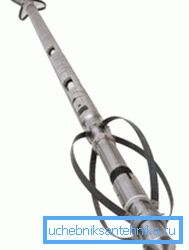
Note! It becomes clear that the price of the necessary equipment and the hiring of specialists capable of working with it is quite high. This is because tamping is often no less and even more difficult than the well itself.
Self liquidation
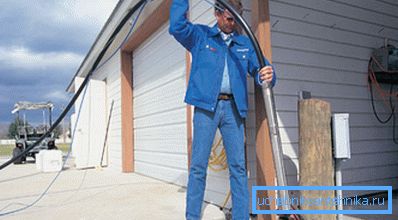
If you have a sand well in the area, its tamponage is not regulated by law, as it does not pose a danger to strategic fields and horizons.
But if you don’t want the overburden and corrosion products to pollute your aquifer, it’s better to tampon it:
- We extract pumping equipment, water pipes and other equipment from the construction trunk;

- We install a tripod with a winch above the well;
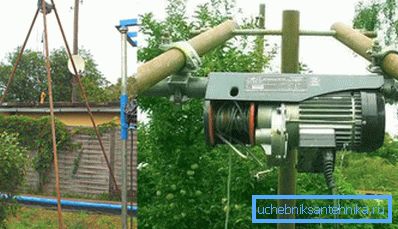
- On the winch, raise the casing and gradually disassemble it, fixing the pipe clamp;
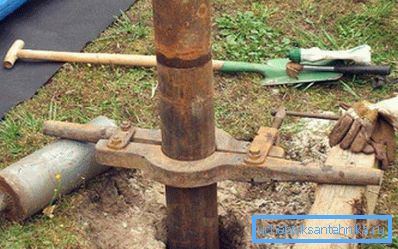
- The aquifer is filled with a mixture of sand and gravel;

- The remaining trunk is filled with cement clay, which is carefully rammed;

- At the mouth, we dig a small hole, which we fill with concrete.
Conclusion
As you can see, the tamping of the well in the process of its elimination is a complex multi-stage task, which requires serious equipment and a staff of specialists. However, you can close a shallow sand hole yourself by following our instructions. The video in this article will help you to study the issue in more detail.